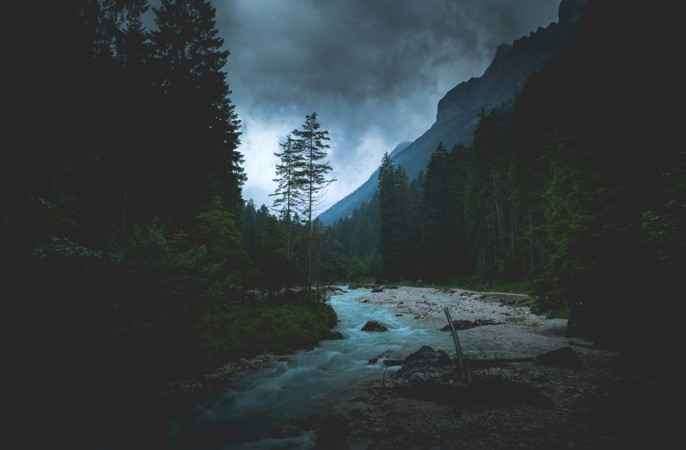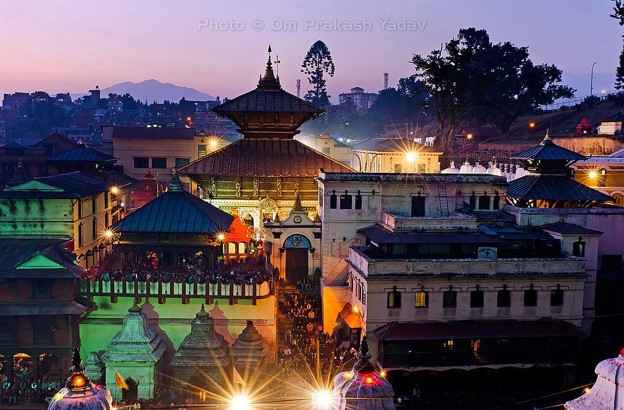
In the realm of travel, there exists a niche that draws adventurers seeking a different kind of journey—a journey not only through space but through the depths of history, tragedy, and human intrigue. This niche is known as dark tourism, where travelers venture into destinations marked by sad events, haunting tales, and macabre landscapes. While many may associate Nepal with its majestic peaks, vibrant culture, and spiritual sanctuaries, few are aware of the lesser-explored facet of Nepal’s dark tourism.
This blog embarks on a unique expedition, delving into the shadows of Nepal’s history to uncover the enigmatic allure of its dark tourism spots. Beyond the typical tourist trails lie sites that tell stories of hardship, resilience, and the complexities of the human condition. From remnants of past conflicts to eerie relics of natural disasters, these destinations offer a window into Nepal’s lesser-known narratives.
Personal Connection: As an avid explorer fascinated by the intersection of history and travel, I have always been drawn to the road less traveled. My intrigue with dark tourism stems from a desire to understand the layers of human experiences that have shaped our world. Through personal encounters and immersive journeys, I have come to appreciate the significance of these offbeat destinations in unraveling the tapestry of Nepal’s past.
Join me as we venture into the shadows, navigating through the labyrinth of Nepal’s dark tourism spots, each with its tale waiting to be unearthed. Through this exploration, we aim to satisfy our curiosity and honor the stories and memories in these haunting landscapes.
Dark tourism often leads travelers off the beaten path, beckoning them to explore lesser-known destinations with hidden histories. This chapter delves into the allure of offbeat spots, uncovers forgotten tragedies, and provides insights from communities living near these sites.
While popular tourist attractions draw crowds, offbeat destinations hold a unique charm for adventurous travelers. Away from the bustling crowds, these lesser-known spots offer a sense of discovery and intrigue. Exploring hidden histories and uncovering untold stories evoke a sense of curiosity and wonder, driving travelers to seek out these offbeat destinations for a more authentic and immersive experience.
Nepal’s rich history is marred by various natural and artificial tragedies that have left lasting imprints on its cultural landscape. These events have shaped the country’s history and heritage, from devastating earthquakes and political unrest to tragic accidents and conflicts. By delving into the stories behind these forgotten tragedies, travelers gain a deeper understanding of Nepal’s past and its resilience in the face of adversity.
Communities living near dark tourism sites offer invaluable insights into the significance and impact of these destinations. Their perspectives shed light on tourism’s cultural, social, and economic implications on their livelihoods and way of life.
Engaging with local residents gives travelers a deeper appreciation for the complex relationships between tourism, heritage preservation, and community development. Understanding these perspectives enriches the dark tourism experience, fostering meaningful connections and mutual understanding between travelers and locals alike.
Venturing into dark tourism often leads travelers to remote and offbeat destinations, where hidden wonders await. This chapter provides practical tips for planning your expedition, highlights the allure of remote wonders, and explores the thrill of embracing the adventure on the road less traveled.
Navigating off-the-beaten-path destinations requires careful planning and preparation. Start by researching your chosen destination thoroughly, including transportation options, accommodation availability, and any necessary permits or regulations.
Pack light, but ensure you have essential supplies such as water, food, navigation tools, and emergency supplies. Familiarise yourself with local customs and etiquette to respect the communities you’ll encounter. Lastly, always leave a detailed itinerary with someone trustworthy and consider hiring a local guide for added safety and insight.
Off-the-beaten-path destinations often harbor hidden gems and overlooked landmarks waiting to be discovered. From secluded monasteries and ancient ruins to pristine natural landscapes and abandoned villages, these remote wonders offer a glimpse into the lesser-known aspects of Nepal’s cultural and natural heritage.
Embrace the wonder and curiosity of exploring these hidden treasures and allow yourself to be captivated by their beauty and mystery.
Embarking on a journey into the unknown inevitably comes with challenges and uncertainties. Each step brings new obstacles, from navigating rugged terrain and unpredictable weather to encountering language barriers and cultural differences. Embrace the spirit of adventure and resilience as you navigate these challenges, drawing strength from the knowledge that every obstacle conquered is a victory.
Embrace the unexpected, stay flexible in your plans, and let yourself be swept up in the thrill of the journey, knowing that the most incredible adventures often lie beyond your comfort zone.
Nepal’s dark tourism spots are often shrouded in mystery and intrigue, with tales that echo through the ages. This chapter delves into haunting legends and folklore, explores encounters with the supernatural, and celebrates the human element of connecting with locals and fellow travelers to uncover untold stories.
Throughout Nepal’s history, tales of ghosts, spirits, and otherworldly beings have been passed down through generations. From ancient myths surrounding sacred sites to chilling legends associated with abandoned ruins, these stories add an eerie intrigue to dark tourism spots.
Delve into the rich tapestry of Nepal’s folklore and immerse yourself in the captivating narratives that linger in the shadows, waiting to be unearthed.
For some travelers, dark tourism offers the opportunity to explore the realm of the supernatural first-hand. Whether investigating haunted buildings, conducting ghost tours, or seeking out paranormal hotspots, encounters with the unknown add an exhilarating element to the journey.
Explore the eerie beauty of abandoned villages, ancient temples, and other sites rumored to be haunted, and dare to delve into the mysteries that lie beyond the veil of the mundane.
Beyond the legends and folklore, dark tourism also offers the chance to connect with the people who call these places home. Engage with locals and fellow travellers to share stories, exchange experiences, and uncover the hidden truths behind the myths.
From sharing a meal with a local family to swapping ghost stories around a campfire, these human connections add depth and meaning to the dark tourism experience, reminding us that the true essence of travel lies in the connections we make along the way.
Exploring dark tourism sites requires sensitivity and respect for the destinations. This chapter outlines ethical considerations and highlights the importance of responsible travel practices to ensure a positive impact on the environment and local communities.
When visiting sensitive dark tourism sites, balancing curiosity with respect for the people and places affected by tragedy or historical events is crucial. Respectful behavior includes:
Additionally, travelers should prioritize the preservation of cultural heritage and refrain from engaging in activities that may cause harm or disrespect to sacred or memorial sites.
Sustainable tourism practices support local communities and promote long-term economic growth. Travelers can contribute to the well-being of host communities by patronizing local businesses, supporting community-based tourism initiatives, and respecting local customs and traditions.
By engaging with local guides and artisans, travelers can gain a deeper understanding of the cultural significance of dark tourism sites and foster meaningful connections with the communities they visit.
As travelers, it’s essential to reflect on the role of responsible travel in dark tourism exploration and strive to leave a positive impact on the places we visit. Travelers can preserve cultural heritage and host communities’ well-being by adopting sustainable travel practices, respecting local customs and traditions, and supporting community initiatives.
Ultimately, responsible travel fosters mutual respect, understanding, and appreciation for the places and people we encounter on our journeys.
Nepal’s dark tourism sites offer a unique glimpse into the country’s history and culture, often highlighting tragic events or significant historical sites. Some notable places for dark tourism in Nepal include:
Pashupatinath Temple: While primarily a Hindu temple, Pashupatinath is also known for its open-air cremation ghats, where funeral pyres burn continuously. Visitors can observe funeral rituals and gain insight into Hindu death practices

Swayambhunath Stupa: Also known as the Monkey Temple, Swayambhunath is a sacred Buddhist site. However, it also houses a “charnel ground” where bodies are left to decompose, providing a stark reminder of the impermanence of life.
Langtang National Park: The devastating 2015 earthquake heavily affected the Langtang region. Visitors can witness its aftermath, including destroyed villages and landscapes scarred by landslides.
Tundikhel: In Kathmandu, Tundikhel was a mass cremation ground during the 2015 earthquake. Today, it is a solemn reminder of the lives lost in the disaster.
Basantapur Durbar Square: This UNESCO World Heritage Site in Kathmandu suffered significant damage during the earthquake. While efforts have been made to restore the historic structures, the scars of destruction are still visible.

Bhaktapur Durbar Square: Another UNESCO World Heritage Site, Bhaktapur Durbar Square showcases traditional Newari architecture. However, parts of the square were destroyed in the earthquake, serving as a poignant reminder of the city’s vulnerability to natural disasters.
Chitwan National Park: While primarily known for its wildlife and natural beauty, Chitwan National Park also offers opportunities for dark tourism, with historical sites related to Nepal’s past conflicts and insurgencies.

These sites offer travelers a chance to delve into Nepal’s complex history and culture, providing insights into the country’s resilience in the face of adversity.
In conclusion, delving into Nepal’s offbeat, dark tourism spots has been an eye-opening journey filled with personal insights and reflections. Exploring these lesser-known destinations has not only deepened my understanding of Nepal’s rich history and culture but also sparked a sense of awe and wonder at the resilience of its people. As I reflect on the hidden stories unearthed amidst the shadows, I am reminded of the power of travel to broaden perspectives and foster empathy.
To my fellow readers, I encourage you to venture into the shadows and uncover the hidden gems that await in Nepal’s lesser-known destinations. Embrace the unknown, for it is in these hidden stories that we find the true essence of travel and discovery, and as always, Travel Till You Drop!

Jill Charpia, founder of Travel Till You Drop and creator of inspiration. A full-time Wanderluster, lover of oddities, the weird, and the dark. Traveled to over 70+ countries and counting; Now dedicated to sharing her travels around the world in hopes of inspiring hearts and open minds. want to know more? Click here to learn more About me.


Hi, Jill Here
Hi! I’m Jill, a Dallas, Texas girl traveling the world. After a career in the Air Force and touring over 50 countries later, my need to explore keeps going! It’s time to rock & roll and find all those places I never knew I was missing.
Table of Contents
Join me to get exclusive travel tips, giveaways and more!
Gallery
Copyright © 2025 | All Right Reserved - Travel Till You Drop